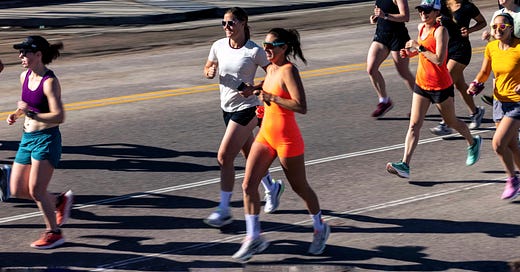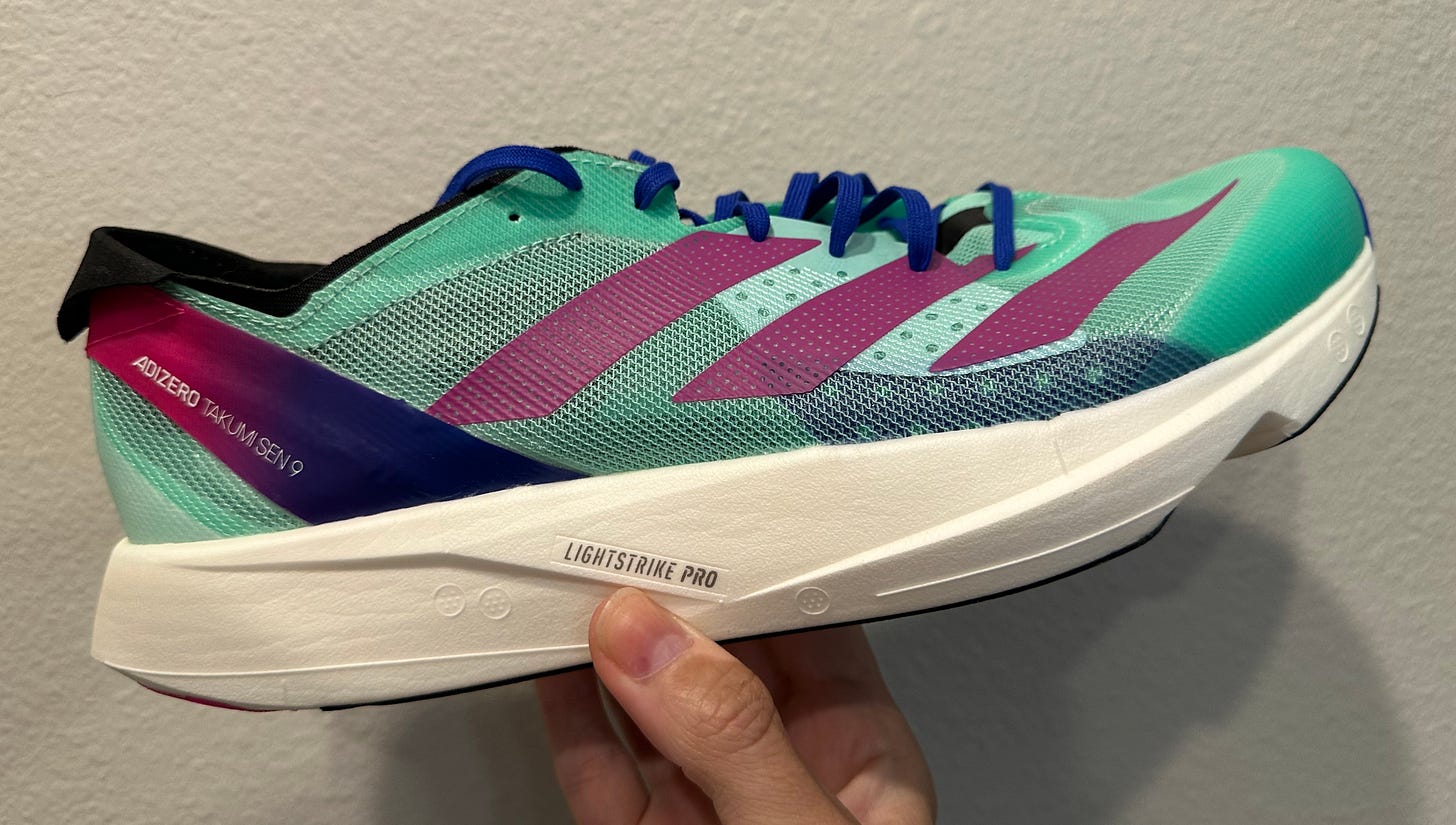Despite what you see on social media—Bolder Boulder excluded—running isn’t always fun. I’m not talking about those times when you’re pushing through the pain cave, or hitting the wall at mile 21 in a marathon. I’m talking about the monotony of grinding away, day after day.
If you’ve started—or are about to start—fall marathon training, you’re in the base-building phase of training. This part isn’t sexy: It’s mostly easy effort running that gradually increases in distance (or increases your weekly running volume) over the course of a month or longer. The point of base building is to increase your aerobic capacity and endurance, so you have a solid foundation to work from when you start adding in race-specific work like longer intervals and threshold runs.
This base-building phase is suuuper important because it helps bulletproof your muscles, bones, and joints against the repetitive impact of training as well as overtraining, which happens when you do too much too quickly. Case in point: Runners training for the New York City Marathon who upped their mileage too fast were more likely to get injured than those who gradually added more volume to their schedule, according to 2023 research published in the British Journal of Sports Medicine.
Unfortunately, base-building can be boring. Because running can be boring! Running is, by nature, a repetitive sport—all you’re doing is putting one foot in front of the other, over and over and over again. (Fun fact: The average 10-minute mile consists of 1,700 steps, according to ACSM's Health & Fitness Journal.)
Boring isn’t necessarily a bad thing, though. Small steps—and lots of them—can lead to big gains over time, which is why consistency is so important. In fact, the volume of easy runs was most correlated with world-class long-distance running performance scores—compared to tempo runs, long-interval training, and short-interval training—in a 2021 study published in the Journal of Strength and Conditioning Research.
Plus, the monotony of training requires focus, mental strength, and resilience. So the benefit to boredom is that it forces you to get comfortable with discomfort, which is a skill you’ll need maintain your effort in the back half of a long distance race.
Of course, that doesn’t mean you can’t make the daily grind more entertaining. People who worked out with friends (or a spouse or co-worker) said they enjoyed the exercise more than those who worked out alone in a 2013 study out of the University of Southern California. People also reported enjoying a workout more when they listened to music, a 2019 study published in the journal Psychology of Sport & Exercise found.
If the idea of another steady-state run makes you want to scream, try a fartlek—that’s Swedish for “speed play,” and it’s a way to pick up the pace without following a structured workout. You just run fast for a set amount of time or until a certain landmark or for a specific part of a song, then give yourself some time to recover and do it again. You can also switch up your standard route; if you can’t go somewhere new, even running your usual path in the opposite direction will make familiar sights feel a little more exciting.
What makes running exciting, though, is challenging yourself to push past previous limits, whether that’s in a workout or in a race—and you can’t do that every day. You also can’t do that without a solid foundation. So even if you’re bored and you can’t wait for the rush of an intense track day or grueling long run, be intentional about the base-building phase in the same way you’re intentional about recovery days or the race taper. Because without it, you won’t be able to raise the bar on race day.
***CALLING ALL NYC MARATHONERS!***
It’s time to start thinking about training for the 2023 NYC Marathon! I've teamed up with Kinesis Integrated to offer running and strength coaching specifically tailored to the NYC course (which I’ve run five times, NBD). If you’re interested in training with me, find out more here!
the rundown
Iron Deficiency Can Exacerbate Mental Health Issues
If you deal with anxiety or depression, have you gotten your iron levels checked recently? Iron deficiency could make mental health conditions worse, March 2023 research published in Current Psychiatry found. The researchers also recommended ferritin tests—which assess the body’s iron storage—for more accurate insights than standard iron or hemoglobin tests. (I wrote about ferritin for Women’s Running if you want to know more). The good news: Iron supplementation of iron has shown improvements in mood and fatigue.
One Man’s Mission to Make Running Everyone’s Sport
I truly believe that running is for every body, and I love to see bodies that fall outside of what’s generally portrayed as “normal” featured prominently in the media. Martinus Evans, founder of Slow AF Run Club, was featured in a recent New York Timesarticle (I’m linking to a free version) in advance of his book, Slow AF Run Club: The Ultimate Guide for Anyone Who Wants to Run. Reading about what inspired his club made me see red, and I hope that reading his story makes anyone who doesn’t see themselves as a runner think twice.
Adidas Takumi Sen 9
This previous version of this shoe was one of my favorite workout shoes of last year, and—fortunately—Adidas didn’t mess too much with a good thing. It has the same Lightstrike Pro midsole plus energy rods that make it such a fast, responsive ride. But the thin mesh upper is updated, shaving 0.4 ounces off the already lightweight shoe and making it more breathable overall. The Takumi Sen was designed for shorter distance races, and after a few track sessions in these, I think it might be time for me to commit to a 5K or 10K.
Lululemon Announces FURTHER
On the heels of announcing their first trail shoe, Lululemon unveiled a new program in tandem with the Canadian Sport Institute Pacific aimed at understanding female endurance performance. They’re going to follow 10 women as they attempt to break records, and use the scientific insights they gather along the way to inform product development. There are some very impressive women on board, and there’s a major sex and gender data gap in sports medicine (see: Christine Yu’s book, Up to Speed), so I’m intrigued to see what kind of findings come out of this project.








Love that running is always better with friends